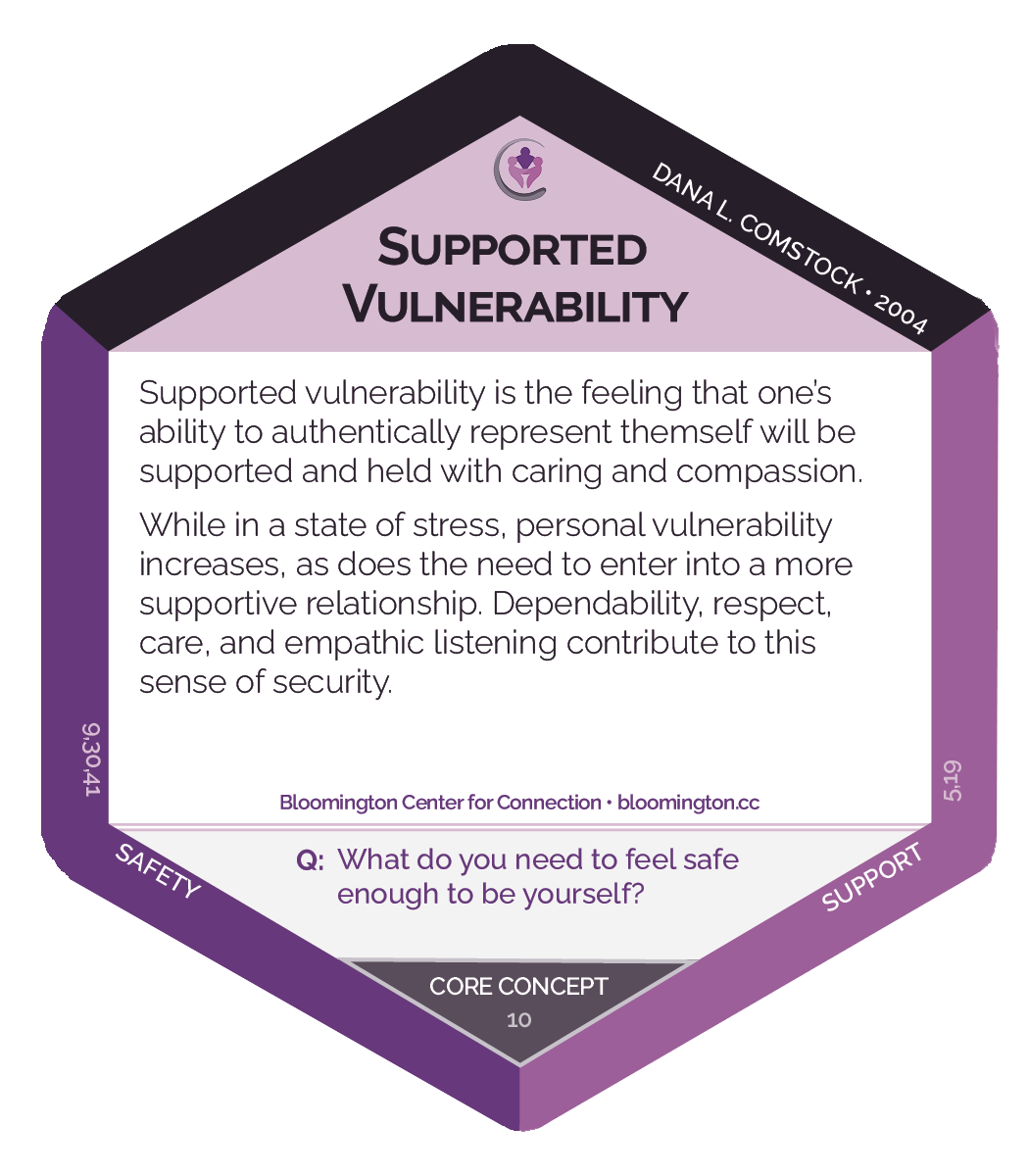A recipe for growth and healing
Supported Vulnerability is a foundational concept in RCT. It refers to the conditions that allow emotional risks within a relationship, trusting the other person to respond with empathy and acceptance.
Like a lot of the words we throw around in RCT, Supported Vulnerability can sound a little heady and overthought. It’s part of the “corrective experience,” or healing relationship, that is at the core of RCT, and it’s possible to identify specific behaviors and mindsets that create it.
Supported Vulnerability looks like—
- Careful, Active Listening: Presence that creates supported vulnerability includes showing attentiveness through body language, affirming responses, and asking questions guided by compassionate curiosity.
- Acceptance: Safety is experienced differently based on factors such as gender expression, race, socio-economic status, and varying abilities or disabilities. Supported vulnerability starts with accepting the speaker’s identity and expression without debate.
- Acknowledgement: Validating feelings of unsafety is crucial. Dismissing fear, even in the name of reassurance, creates more anxiety due to feeling misunderstood and unseen. To feel safe enough to be vulnerable, we must know our identity and experience are accepted and valued.
- Cultural Awareness: Much of our language around mental health and healing centers a white, heteronormative, neurotypical, able-bodied, cis-gender perspective. Creating supported vulnerability requires us to be open to different ways of seeing wellness, connection, identity, and healing.
- Cultural Humility: It is impossible to create supported vulnerability if we don’t understand context. A Black person’s experience of safety in a public park can be dramatically different from a white person’s. A transgender or gender non-conforming person’s concerns about safely making new connections may include fears that haven’t crossed a cis-gender person’s mind. Cultural humility is the practice of continuously engaging in self-reflection and critique to understand and respect the unique experiences of others, particularly as it pertains to diverse cultural backgrounds and social identities.
- Responsive Pacing: Creating supported vulnerability requires time for quiet reflection, following the speaker’s lead, allowing time for deep exploration without pushing for quick solutions or specific answers.
- Power-With: Cultivating the safety needed for supported vulnerability requires awareness of the power held in the relationship, and a deliberate use of collaboration and care. This can look like, among other things, reminding the speaker that you won’t push for more than they are ready to share, that they can stop or shift directions at anytime, or validating their struggle to be heard.
- Clear Communication: Understanding limits of confidentiality and clear communication about availability outside the conversation (even an “I’ll be away from email next week” statement) can create a safe environment for vulnerability.
- Self-Disclosure: Sharing authentic emotional responses, including sadness, outrage, and joy, can demonstrate a full receiving of what someone is sharing and can make room for more vulnerability. Note that this self-disclosure is done while maintaining the focus on the person sharing.
- Mutuality: Directly related to self-disclosure, mutuality involves the understanding that you are both moving another person, and allowing yourself to be moved by them.
Supported Vulnerability is one way RCT honors the counseling and social work value of “starting where the client is.” It helps us co-create a place that is not just safe enough for self-disclosure, but one that is welcoming and encouraging of vulnerability; a place that can hold our uncertainty and fear while inviting exploration and healing.

